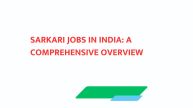Digital transformation is unfolding at a breakneck speed. Enterprises from all domains are hopping onto the cloud bandwagon to ensure scalability, efficiency and security. In a bid to warrant cost efficiency, agility and business continuity, the rapidly evolving cloud ecosystems are witnessing rapid migrations from legacy on-premise infrastructures to cloud-native architectures. Technical solutions architect Rachit Gupta demystifies the inscrutable and evolving domain of Cloud, citing best practices and tenets for success.
Rachit Gupta’s cross industry experience has helped companies build scalable, high-performance
systems while maintaining compliance and security. Armed with 20 plus years of experience, Gupta
has played a critical role in helping organizations through complex cloud migrations, optimizing
cloud security, and ensuring seamless integration across platforms. Rachit’s sound domain
knowledge and robust experience has landed him a judge’s seat for Artificial Intelligence at the
prestigious Globee Awards while his research on SaaS in e-Commerce has been widely published.
A Cloud First Approach Leading the Way.
Speaking about a sharp industry trend, Rachit Gupta quipped, “The only way companies can Instantly adjust infrastructure based on real-time business needs and scale on demand is to embrace a cloud first strategy. We are seeing more and more companies adopting this as a strategy in recent times. The built- in security frameworks that are offered by cloud providers can also improve compliance and security. And this is just the tip of the iceberg. Operational efficiency is another vital reason for companies to adapt. In the current scenario the shift to cloud is not a mere technical upgrade, it is an out and out transformation”.
Mitigating Migration Challenges.
Rachit highlighted the challenges that cloud migration entails. Starting from Data Security to integration with legacy systems and a burgeoning cost implication are some of the factors that organisations must factor in before attempting a migration. Rachit warned, “It is definitely not a walk in the park. Organizations must have a long-term vision and not be deterred with short term challenges that a migration can pose. Data protection at all stages, ensuring seamless compatibility with the IT infrastructure and of course a tight watch on the cost must be taken into account”.
The Road Ahead for Cloud-Driven Enterprises
Gupta who has been a part of the ARIIA advisory committee stated “If you think Cloud is just infrastructure, you will be sorely mistaken. A cloud strategy catapults an organization towards future innovation over and above foundation. A sound cloud migration is as good as a pioneering strategy”. With technology evolving and improving every day the industry is gradually veering towards multi-cloud and hybrid-cloud models to balance variables.
Businesses are unlocking new opportunities for growth, operational excellence, security and innovation by also employing AI-driven automation tools and serverless computing to augment cloud’s efficiency, minimize human intervention and handle heavy workloads. “The dynamic landscape of clouds keeps getting interesting. With the advent of AI the scope is expanding like never before. Not just technical configurations, it is adding newer use cases on a regular basis. Organizations must stay on top of these transitions oresle they will have to keep playing catch up”, Rachit concluded.











